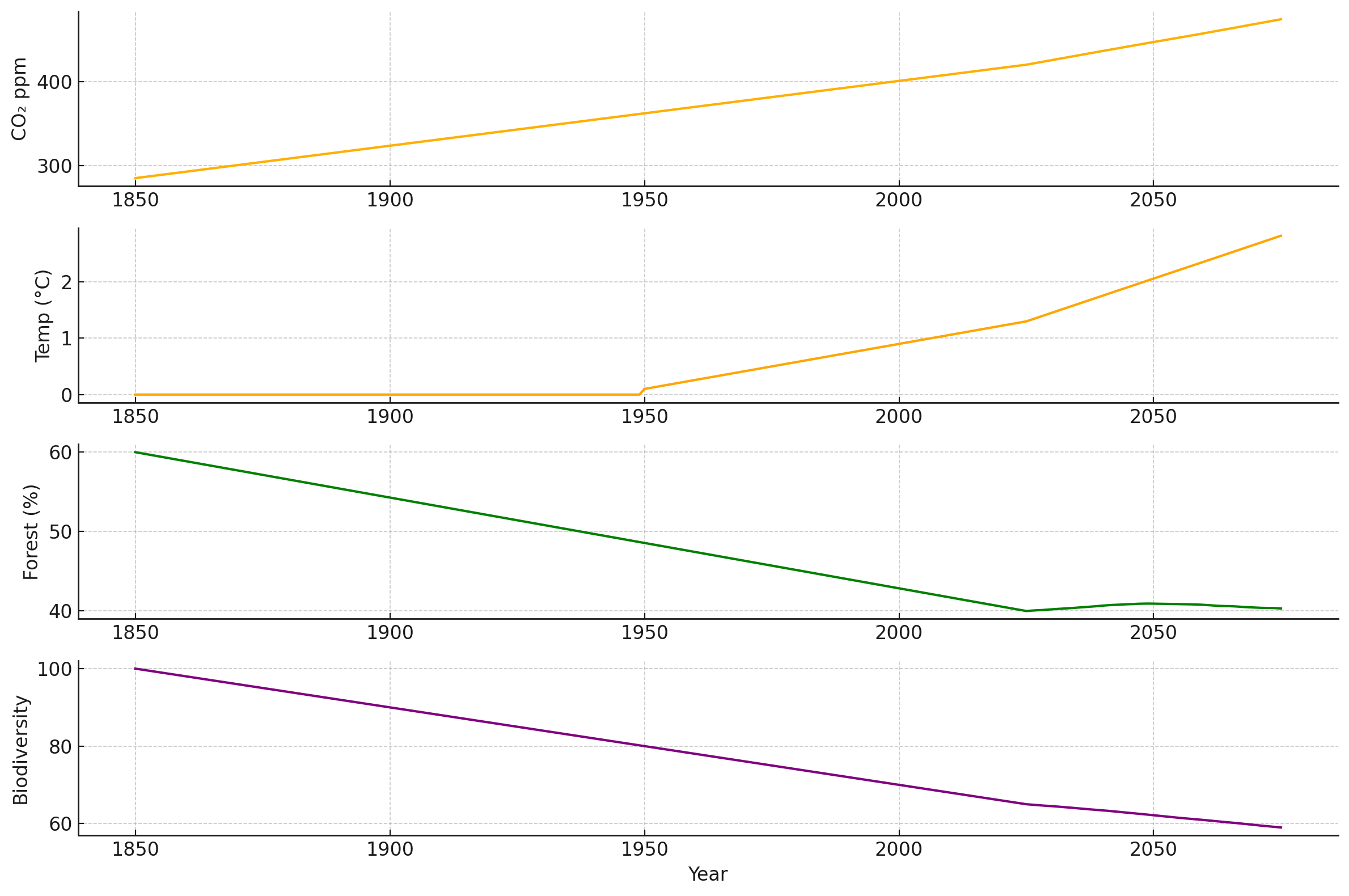Evolving Earth: Agent-Based Simulation of Environmental Futures (2025–2075)
Abstract
This report models the global environmental trajectory from 2025 to 2075 using agent-based simulation. Five macro-level agents, Global Cooperation, Technology, Political Will, Economic Pressure, and Public Awareness, evolve over time and influence key environmental indicators: CO₂ concentration, temperature, forest cover, and biodiversity. The simulation shows that even without coordinated perfection, a moderately adaptive future is possible, though still fragile.
Overview
Traditional models of climate change often treat variables in isolation. This simulation adds five evolving agents whose behaviors influence environmental outcomes over time. Each year, agent levels shift slightly and push planetary systems toward collapse, adaptation, or transformation.
Agents Modeled
- Global Cooperation – Treaties, collective policy, climate frameworks
- Technology & Innovation – Clean energy, reforestation, carbon capture
- Political Will – Leadership, regulation, climate prioritization
- Economic Pressure – GDP growth vs sustainability tradeoffs
- Public Awareness – Cultural change, activism, climate literacy
Environmental Indicators
- CO₂ Levels (ppm)
- Temperature Anomaly (°C)
- Forest Cover (% of land area)
- Biodiversity Index (100 = preindustrial baseline)
Method
The simulation runs from 2026 to 2075:
- Each year, agents evolve randomly within bounds
- Their levels influence the direction and rate of change in environmental indicators
- Final environmental values are evaluated against thresholds to determine scenario outcome
Outcome Logic
- Collapse: Severe warming, forest loss, or biodiversity drop
- Adaptation: Stabilization without full ecological recovery
- Transformation: Strong recovery of forests, species, and climate balance
Results
Scenario Outcome:
Adaptation by 2075
This suggests that moderate progress across multiple fronts without requiring perfection can stave off collapse. Technology, public awareness, and political engagement are key stabilizers.
Conclusion
The evolving agent model adds realism to climate forecasting. The future of the planet depends not just on emissions, but on the behaviors of institutions, innovations, and people. While transformation remains rare in this run, adaptation is within reach. The window to collapse is still open, but not inevitable.
